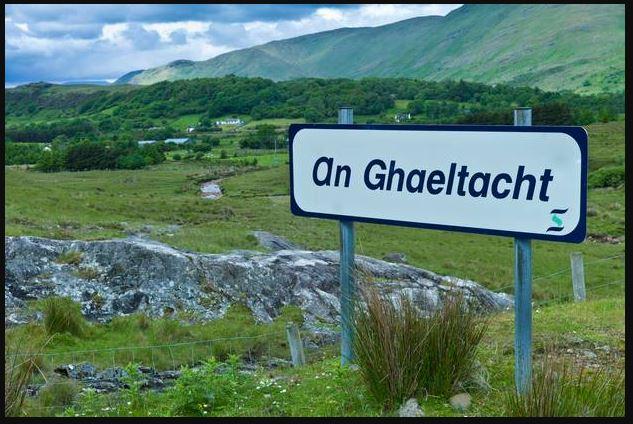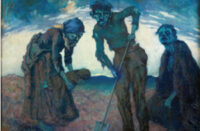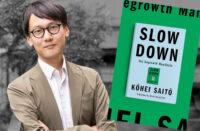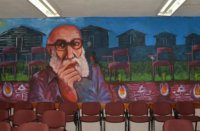Over the years, the Socialist Voice has had some great articles advocating for the Irish language, seen from an anti-capitalist lens which are definitely worth re-reading. I didn’t go to school in Ireland so I don’t have any experience with learning Irish in that setting, but I did grow up as a bilingual person in Belgium. Moving here and discovering that Irish still lives awakened an interest in the language for me.
Viewing language learning from a purely capitalist perspective will only serve to kill “minority” languages, like Irish. And along with the language, its associated culture is also threatened. Hasn’t enough of Ireland’s culture been erased by the English, who almost killed off the language as well?
I asked my friend, a teacher, for his opinion:
“Gaeilge in school was always something met with a groan. I hated it. It was nothing but patterns, and nonsensical rules followed by ‘you just need to know – it’s that way because that’s the way it is…’ You could see the love for the language in some teachers, but it had been beaten out of children by unsupportive parents, a dated curriculum and an unsupportive country. They were watching a language dig its own grave, with one foot planted firmly in the ground and the other ready to fall in.
“The curricula, both for Gaeilge and English, got a revival in 2019, but the revival of the Gaeilge curriculum seemed to aim more at Gaeilscoileanna rather than Gaeilge as ‘T-a-dó’, (teanga a dó – language number two). Gaeilge T-a-dó was more of an addendum, a linkage to English – ‘if you do this in English, do it in Irish’ which was practically insane. In secondary school, it was treated more or less the same: minimum of four times a week, mostly reading short stories and poems, but only given translated summaries: one side English, the other Gaeilge.
“We were told that if you can learn a fraction of this summary, a sentence on theme, and a sentence on feeling, and explain it somewhat well, you’re guaranteed good marks. Tie this in with a makeshift story using ‘go tobann’, and ‘ar nós na gaoithe’ – buzzwords taught to capture marks, surrounded by what can only be described as Google Irish – really dampened the experience, but at least you got a semi-decent mark in the Junior Cert.
“Only in fifth year, on the doorstep of the Leaving Cert did I realise that it was sink or
swim. My religion teacher actually taught me Gaeilge during RSE (Relationships and Sexuality Education) lessons and lessons on morality; he explained things others wouldn’t. The Genitive Case, ‘an Tuiseal Ginideach’, is something that is taught with the pretext that ‘if you teach it enough, it just sticks,’ and in the case here, it consisted of whacking random ‘i’s and aspirating some words (adding a H) but not others, with the hope that the children clocked the same pattern the teacher did. This religion teacher had explained it to me over three lessons; two extra hours of Gaeilge a week.
“I had a mini poly-pocket full of flashcards: how the different cases worked, what the
prepositions were, what got aspirated and what didn’t. I had a colour-coded system. Grammar, Rules, Phrases, Interesting words.
“While the revival of the language we’re seeing on TikTok is immense and heart-warming; its influence is still skewed in both the wrong and right direction. It currently focuses on 14-24 year olds; the most vocal people in the country.
“We hope that, like myself, many more of those inspired become teachers and bring
about a new grá for the teanga, but the attention also needs to move to those who need it
the most: the children.
“Current resources still seem dated and treat young learners like dense toddlers, speaking in slow, goofy voices, in unrealistic settings. As cool and funny as it would’ve been in Senior Infants to have learned simple Gaeilge from a purple dinosaur, the children need more realistic resources: curated shows aimed at their demographic; simple resources with simple voices from everyday people.
“Most of this comes from experience, both in the education sector and as a student who
left school not too long ago. I want better for my language, for my children and for this country. For a language said to be ‘dead,’ its revival rivals that of Hyde and the Gaelic League many moons ago; it is fierce, and driven by the young.
“Now is the time to support it from all angles and avenues, not just in schools and children’s resources. However, we can only take so many steps at once before we might start to jump backwards again. In finding that balance, there’s no telling what could become of the beautiful language.”






